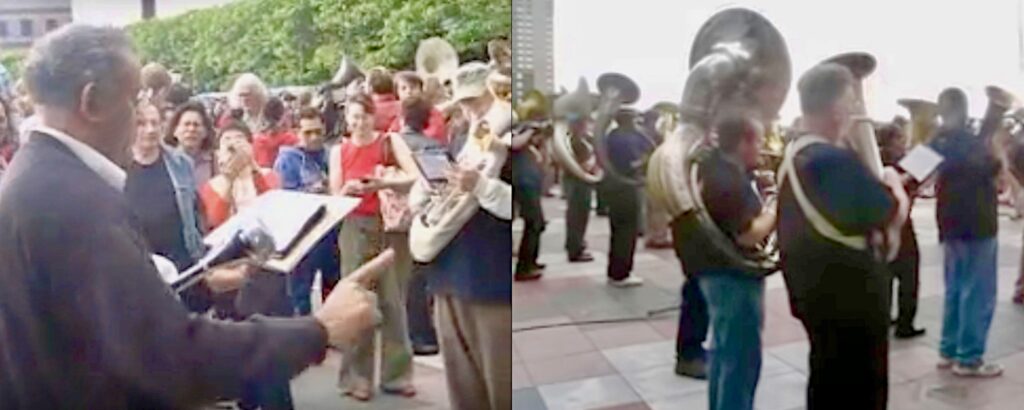Recently, I read an article quoting a Juneteenth activist saying something like: The time between Juneteenth and July 4 should be a sixteen day celebration of American freedom. Opal Lee, who championed the holiday for many years before it became a reality, said: “Juneteenth will be the bridge that we can all go over. We should celebrate from June 19th to the 4th of July!” As someone who grew up celebrating Patriot’s Day — April 19, or the commemoration of the Shot Heard Round the World — I agree that we need more days to celebrate the American dream of freedom. So I’m grateful that my employer decided Juneteenth is a paid holiday for staff at our congregation, and I’m using the day to celebrate American freedom.
Although maybe I’m celebrating U.S. freedom in an unusual way. For me, an important result of freedom in the U.S. is the freedom we have for artistic expression. And with that in mind, this Juneteenth I’m celebrating by listening to music by Anthony Braxton. National Public Radio has said of him:
“Anthony Braxton has always done things his own way. He’s famous for creating his own musical syntax and strategies, in work that straddles jazz and classical traditions but conforms to no established pattern. He is a true American original — and by his own account, a perpetual work in progress.”
Isn’t that perfect for a celebration of American freedom?… combining cultural influences… conforming to no established pattern… creating your own way… a perpetual work in progress.
With that in mind, today I’m listening to one of my favorite works by Braxton: “Composition No. 19 (For 100 Tubas).” A recording is available from Braxton via Bandcamp. You can also see two short video clips of an outdoor public performance here and here. While I suspect Braxton would resist any easy interpretation of this composition, I can’t help but hear this as being in small part a musical commentary on John Philip Sousa’s patriotic marches, but in a musical idiom that is much more powerful and much more nuanced.

Update, 6/19: Here’s a video of another performance. Definitely worth watching, since there’s a whole visual aspect of this composition, too.
Update, 6/20: Added Opal Lee quote.

My musical ear is nowhere near as developed as yours, but wow. Just wow! I found myself laughing–not AT the performance, but more laughing with some delight at the absurdity of it all! It certainly was “much more nuanced” than JP Sousa. I listened to the whole thing, and wondered if maybe it was a musical tribute to Waiting for Godot at one point. I try to keep up with what is new and modern so I won’t be an old fogey, so thanks for introducing me to this work.